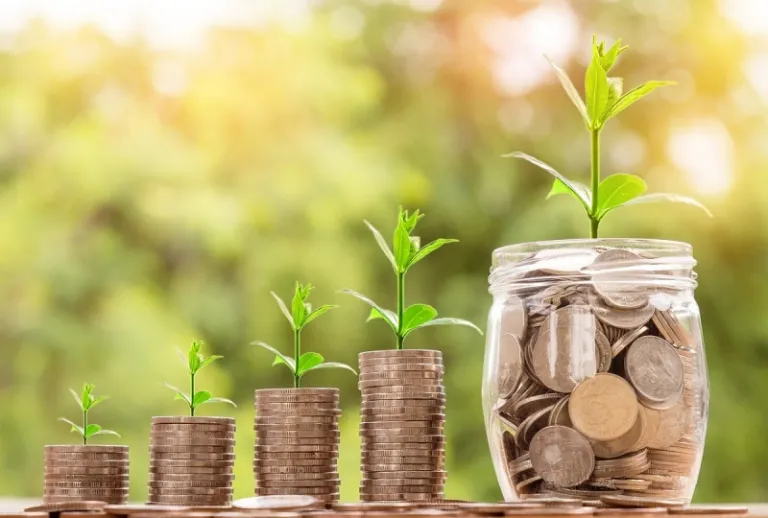The only plastic we need for travel.
7 Life Investments You Should Secure Before Travelling the World

You know how some people say they would have wanted to travel more often when they were younger, but life got in the way? To be exact, the need to set aside time and resources for got in the way.
While carefree folks will use this premise to propel them to a life of travel, securing is a reality all of us have to face at one point, too. How many times have you heard random titas and titos of Manila say, “Kayong mga millennial travel lang nang travel! Meron ba kayong ipon?!” We never tolerate travel shaming, but to be fair, may point nga naman. And just to be clear, we’re not saying all young frequent travellers don’t have their priorities set straight either. It’s just good to strike a balance so that we won’t miss out on all life experiences.
Also read: Shame Culture: 10 Ways You Can Deal With Travel Shamers
YOLO or ? Why not both?

When was the last time you checked on your savings? Have you ever thought about your retirement? Is it time to up your game and invest? Do you have a billing statement in your name? Loving travel shouldn’t mean we forget about everything else — especially when important can actually help us reach our #travelgoals sooner than we think.
Also read: This Filipino Couple Has Travelled the World’s Seven Continents — Here’s How They Did It!
Whether you’re an office worker or a digital nomad, or even someone who gets to make a living out of travel (lucky!), we highly recommend reading till the end. We’re putting a whole new meaning to YOLO-ing. It’s true: You Only Live Once, so why not prepare ahead for the best life you can have? Here’s a list of you should secure before slaying those plans to travel the world.
1. Savings accounts

That’s right — it’s in the plural. We all know we should have a savings account, but there’s financial wisdom in the saying, “Don’t put all your eggs in one basket”. I’m no money expert, but that’s something my trusty banker friend always tells us. Never put ALL your life savings in just a single account. First of all, it’s always safer to divide your money. We all trust our banks, but in the off chance that something terrible (*knock on wood*) happens to them, you wouldn’t want the entirety your life savings affected, right?
Tip: Set savings goals
Second, having at least two bank accounts will train you to be more disciplined when it comes to keeping track of your earnings. It will encourage you to have multiple savings goals, too. Ideally, one of your accounts should be perpetually untouched because it will serve as your emergency fund.
The third reason is simple and one I’ve learned the hard way when I was younger: When one bank’s system is down, at least you have the other(s) to turn to for daily spending.
2. Insurance

I used to be the type of person who would shy away from people selling insurance. Silly me, I just thought I wouldn’t need it. Or worse, I used to think I would get scammed. If you’re still there in the same position I was a few years back, let me be the one to burst your bubble. Yes, you do need insurance. Yes, it’s one of those that will serve you well in the future (even until retirement). And no, I’m not trying to offer you an insurance policy.
But I do have friends and trusted family members who are agents of insurance companies, and they’ve shared countless testimonies from people we personally know. I was amazed by how insurance policies helped these people get through the absolute worst of times. A wife whose husband’s sudden death left her grieving and in debt. A 20-something suddenly diagnosed with an illness that left her unable to work for months. Several accounts of vehicular accidents. You get the picture.
Tip: Stick to a budget
The great thing about insurance is that you can request for a policy that meets your personal budget. There are many things that you can have covered with your insurance policy: accidents, death, disability, etc. You can even invest a portion of your money through your insurance company! All you have to do is ask the agent to craft a policy that’s within your preferred budget range. These plans are often flexible so don’t be afraid to ask.
I know this turned grim fast, but these are the realities of being human! We are neither invincible nor immortal. Best embrace that before you start your adventures. An added plus of purchasing insurance from a friend (or a friend of a friend) or a family member? You’ll help them reach their quota at work. *wink*
3. Health card

Most people have health plans courtesy of their workplace. If that’s the case, then good for you! But if not, a health plan or health card should be one of your priorities. Like I mentioned above, we’re but human. We get sick. Some of us, more than others. Sure, you can pay those doctor’s bills straight out of your pocket, but you’d be saving yourself a lot of money (and time) with a health plan.
Tip: Use those medical perks!
Plus, health plans or health cards often have complimentary perks such as annual check-ups and free dental care. Use those perks! Even if you aren’t feeling ill, it’s good to have yourself checked every once in a while.
4. End of

Not many of us find talking about our mortality pleasant. It’s generally a topic most would avoid. But it’s bound to happen to all of us. End of s, often called s or memorial plans, make the burden of death lighter for all who are involved. Loved ones who pass away are assured of a final resting place and those who are left behind may find comfort in the fact that memorial arrangements have been taken care of.
Tip: Choose a transferrable
The nice thing about some pre-need s is that they are transferrable, meaning the policy owner can actually use the for any of his or her loved ones in case of sudden death. Select one with that option.
5. Investments

Again, let me make myself clear: I am no finance expert and I won’t pretend to be one. But when you feel that you have enough to go around or when you’ve set aside a pretty healthy sum, it might be time for you to invest. Investments, in a nutshell, will let your money grow more than it would in a savings account. Some people say that it’s like making your money do all the heavy lifting for you. Why? Because you supposedly earn without working hard for it. Of course, it’s your hard-earned money you’ll use as capital in the first place. And keep in mind investing is like a gamble — interest rates go up and down like rollercoaster rides.
Tip: Read and consult
So if you’re not really well-versed about stocks or or whatever fund it is you’d like to invest in, READ. Read and read some more. Do your research. Hire a stockbroker if you must (or if you’re able). You have to know what’s going on at all times if you’re going to be a player in this industry. It’s the only way to protect yourself from an unstable market (or a market you might know nothing about).
6. Credit card

If you have an extension of your parents’ or guardian’s credit card, that’s fine. If not, it would be wise to build a healthy relationship with your bank so you can eventually apply for a credit card that’s in your name. Not only will it allow you to gain good credit history; it will afford you access to your very own billing statement, too. And billing statements are great documents you can use for opening savings and utility accounts, applying for credit cards, investing, buying property, and even for securing certain travel documents.
Tip: Swipe your card wisely
But remember, your credit card isn’t for unlimited shopping. It’s not for eating out and going to the movies all the time — unless you’re trying to build your credit history with continued spending. Instead, save your credit card for controlled monthly purchases, emergencies, and travel. If you love to travel, your credit card will definitely come in handy. It’s financial security on-the-go. Swipe wisely.
7. Enough funds to fly with travel insurance every time

Who doesn’t want to save money? We all do. That’s why many of us are fans of budget travel. I am, too! But I think we’ve established enough how unexpected life can be. So try to make it a point to have enough funds to secure travel insurance before you fly to another continent. Just so you have peace of mind while exploring and having fun thousands of miles away from home. No harm done if you aren’t able to use it anyway.
Tip: Grow a travel fund
Remember the savings goals we encouraged you to set early on in this article? Wouldn’t it be swell if you had a travel fund to feed and grow, too? That would totally make sense if one of your life goals is to jet-set across the globe. And if you do catch the travel bug, all the more you should prepare to invest in an insurance policy that protects you even when you’re out of the country.
Also read: Philippine Passport Holders Who Travelled to All 7 Continents
But this adulting thing is hard as it is, and securing all these is easier said than done. And we know very well how easy it is to #MakeTravelHappen these days. So don’t worry, don’t hurry, and just take on one goal at a time. You’ll find that your #travelgoals, your #lifegoals, and your financial goals all intersect at some point, so be proud of every step you take in the right direction.
Published at
About Author
Alyosha Robillos
Subscribe our Newsletter
Get our weekly tips and travel news!
Recommended Articles
14 Best Credit Cards for Travel in the Philippines AXA MyLifeChoice: An Easy Way to Save & Invest Towards Your Goals What does #adulting mean for you?
LIST: Bank Transfer Fees + Online Banks With NO Bank Charges! Which digital bank are you using?
5 Must-Know Tips for Every Traveller in Case of a Cancelled Flight Here’s how to handle it with ease.
Travelling Cashless? Here’s How You Can Pay Via GCash Abroad Cashless, real-time forex charging, and zero service fees!
Latest Articles
Guide to Palawan Delicacies: 9 Authentic Must-Eats and Pasalubong Taste your way to Palawan!
Canada Expands Visa-Free Travel to the Philippines: Here’s What You Need to Know Filipinos can now travel to Canada visa-free!
First American Pope Elected: Meet Pope Leo XIV Historic Vatican moment unfolds
Limasawa Island: Beaches, History, and Hidden Gems Where history and island life meet
Your Complete Travel Guide to Bonbon Beach: One of the World’s Best Beaches in 2025 Bonbon Beach in Romblon just made it to the world’s best beaches list!

